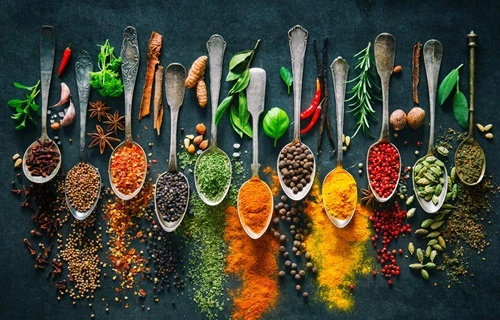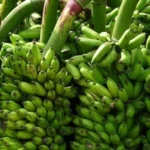The Spice industry is a vital component of the agricultural sector, with millions of farmers depending on the growing of spice crops. The major spice crops grown in India are chilies, turmeric, pepper and cardamom. The states that have mastered the art of spice cultivation are making a significant contribution to the overall spice output of the country. With government support and technological advancement in agriculture, India is set to maintain its leadership in spice production globally. So here is the list of top spice producing states of India:

1. Madhya Pradesh
Madhya Pradesh is one of India’s largest states and is leading in spice production. The state is well-known for its diverse spice production in India. Neemuch, Ratlam, and Madsaur districts are major spice producers in the state. Madhya Pradesh is particularly known for the production of spices such as coriander, cumin, turmeric and fenugreek. The state’s coriander is highly prized for its purity and strong aroma, making it a favourite for masala manufacturers across the country. The Spice Park in Guna, Madhya Pradesh has facilities for processing, quality evaluation, and cold storage, which further strengthens its position as a spice producer in India.
2. Rajasthan
The next state on our list of major spice producers in India is Rajasthan. Though Rajasthan is known for its dry climate its role in spice production in India is significant. The most common spices produced in the state are cumin and coriander. Rajasthan is known as the largest coriander producer in India. The cumin of Rajasthan is popular for its earthy flavour and aromatic qualities. The spice contribution of the state meets domestic and international demand; cumin produced in the state is exported to other countries. The state has made strides in improving irrigation and farming techniques, ensuring steady growth in its spice output.
3. Gujarat
The third state on our list of highest spice producers in India is Gujarat. The state contributes 1.03 million tons of spice annually. Gujarat is well-known for the production of spices such as chillies, fenugreek, turmeric, garlic, coriander, fennel and cumin. These ingredients are important to make traditional Indian cuisines that add flavour to food. Junagadh, Banaskatha, and Suratilles are the spice belt of the state. Gujarat’s location on India’s western coast along the Arabian Sea has made it a key centre for spices. It plays a significant role in India’s spice export. Reforms in agricultural policy, the adoption of organic farming and the persistence of farmers have led Gujarat to dominate the spice market.
4. Andhra Pradesh
Andhra Pradesh is well-known in spice production with massive cultivation of chillies and turmeric. The state’s fertile soil and favourable climate conditions allow it to grow a variety of spices. The Guntur region of Andhra Pradesh is famous for the cultivation of chillies. These chillies are spicy and widely used in preparing Indian cuisine all over the country. The distinct intense flavour of Guntur chillies makes them highly sought out spice in both domestic and international markets. Technological advancements and government initiatives to boost spice cultivation in the state have helped farmers improve their yields and quality.
5. Telangana
The last state on our list of highest spice producers in India is Telangana. It is a significant contributor to chillies and turmeric in India. It is estimated that Telangana contributes to 0.74 million tons of spice annually. The state is the highest producer of turmeric in India. Nizamabad, Karimnagar, Warangal and Adilabad districts of the state contribute to 90 per cent of the state’s production. Other spices grown in the state are tamarind, ginger, and coriander seeds. These spices are widely used in Indian cooking to add flavour and enhance the dish.
Conclusion
The top five highest spice-producing states in India are Madhya Pradesh, Rajasthan, Gujarat, Andhra Pradesh and Telangana. These states highlight the remarkable diversity in agricultural production of the country. The states are not only catering to the domestic market but are also playing a crucial role in meeting the growing global demand for Indian spice. With ongoing innovations in farming techniques and an increasing focus on organic production, these states are expected to continue dominating India’s spice landscape in the years to come.
Parkash Singh is a PGT Teacher in Kendriya Vidyalaya Rohini, New Delhi. Parkash completed his starting education from Bihar Board and graduated from Babasaheb Bhimrao Ambedkar Bihar University. He regularly writes educational and informative articles at IndiasStuffs.com
Page Contents

